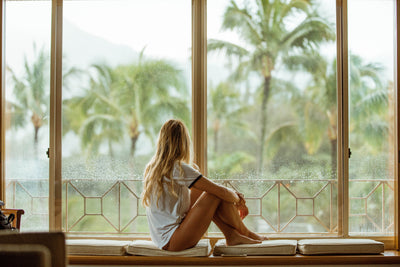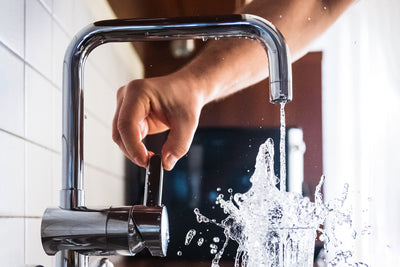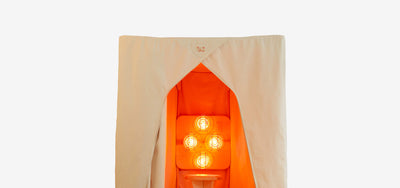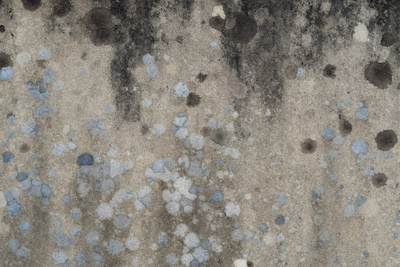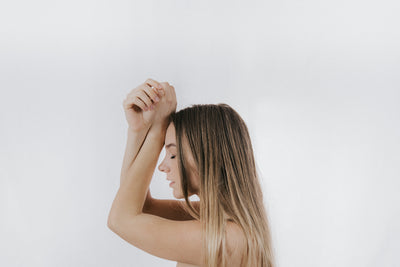How to Create the Ideal Environment for Better Sleep

To experience optimal sleep, first you need to create an optimal sleeping environment.
“To feel our best, and to enjoy peaceful, rejuvenating sleep, we need to take things back as closely as we can to how our ancestors would have slept”, says Conscious Spaces founder, Tara Williams. “That means much less artificial light and fewer electric appliances, digital devices, toxic fire-retardants and synthetic materials, for a start.”
Here’s what you should consider if you want to transform your bedroom into a bona fide sleep sanctuary that your predecessors would be proud of:
EMF Shielding
“You may not have thought about electromagnetic fields (EMFs) affecting your sleep” says Tara, “but if you have problems sleeping and are not sure why, then you might want to do some investigating.”
Research into EMFs and sleep is not extensive – but what does exist warrants further attention, highlighting the link between (1) higher electromagnetic radiation exposure and poorer sleep quality, possible sleep disturbance (2) and a longer time taken to fall asleep. (3)
Way back in 2008, a scientific study (4) found that exposure to electromagnetic radiation from mobile phones made it more difficult to achieve deep sleep and to stay soundly asleep.
Professor Bengt Arnetz, who led the study, believes that the radiation may activate the brain's stress system, "making people more alert and more focused, and decreasing their ability to wind down and fall asleep".
The research also revealed how radiation interfered with the sleeping body’s ability to repair any damage suffered during the day.
“The most important time for your brain to detoxify is when you’re sleeping”, adds Tara.
A study (5) published in the journal Science last year supports this idea, explaining how our brains literally wash away toxins as we sleep. The research revealed how cerebrospinal fluid (CSF) washes through the brain during sleep, removing waste and kick-starting the cleansing process. If we don’t sleep, this fluid is unable to do its job, and toxins can build up in our brains – ultimately causing cognitive decline.
“If you don’t sleep, then your body cannot repair itself. So, over time, you’re essentially going to be prematurely ageing yourself and could experience serious health consequences as a result. It’s almost like a double-edged sword – with the EMFs affecting sleep and then the health impacts of poor sleep affecting overall wellbeing.”
“When you suffer from broken sleep”, Tara explains, “that’s also going to affect your cortisol levels, and so your stress levels too. We know that increased cortisol is linked to weight gain, and can also affect diabetes, so it’s bad news if it gets out of check.”
In a study (6) published earlier this year, female insomniacs were found to consume more food overall – and a lower quality diet – than other women. Those who had difficulty falling asleep had a “higher caloric intake”.
The solution? “If your home has high levels of EMFs present, it’s absolutely crucial to properly shield against electromagnetic frequencies in your bedroom – especially if you have a chronic health condition”, says Tara.
“If I’m in a high-EMF environment without shielding, I simply don’t sleep. When I go to London, for example, it’s really tricky. Unless I use an EMF protection device, such as my Qi-Shield - which is brilliant - I’m lucky if I get a few hours’ rest. Of course, insomnia can be linked to other factors too, but actually it can often be directly correlated with too many manmade EMFs in your surroundings, which is what I’ve found personally.”
Sleeping in a shielded environment can help to make you feel calmer and more relaxed, whilst also alleviating any potential symptoms of electromagnetic hypersensitivity (EHS). (7)
The key tools in your bedroom shielding kit? An EMF protection bed canopy (like this one, which can provide 5G protection using Silver-Tulle fabric paired with an EMF protective bed mat - both of which can be found in the Conscious Spaces online shop.
“We’d obviously always prefer to have natural fabrics, but at the moment, the products currently available that provide a high enough level of EMF protection seem to be made from or include non-natural materials. For example, there are some super natural ones out there, but results seem to show that they may only protect up to around 3G-4G.”
“This might be enough for some people, but if you are sensitive, have further health issues or live in a high density EMF environment, we absolutely recommend you try the Silver-Tulle fabric shielding bed canopy.”*
For added peace of mind, why not hire a professional EMF consultant, who will have an array of different meters and tools at their disposal, such as gauss meters and body voltage meters, and be able to offer tailor-made recommendations to make your bedroom a safer place?
Consultancy takes into account not only radiofrequency EMFs, but also geopathic stress, magnetic fields, dirty electricity and any electric fields in your house emanating from wiring or other, external sources, too.
“Geopathic stress is really interesting”, says Tara. “It’s like natural EMFs, or EMFs in and from the earth. Some people find that geopathic stress can cause just as many issues as manmade EMFs, and so is just as impactful on their health – so it’s another overlooked thing which can affect how well you sleep.”
An EMF consultant can recommend and help to organise:
- Installation of shielding paint and mesh materials
- Installation of window films and shielding nets
- Look for, and address, any areas of geopathic stress
- Carry out tests before and after any implementation to ensure everything is working effectively and grounded properly
If you'd like some expert help in implementing EMF protection into your home, we'd advise speaking to one of our knowledgeable consultants, who can make specific recommendations. This service can also be carried out virtually, via video call. Call or email our team for more information:
T: (+44) 01326 727 222
E: support@consciousspaces.com
Mattress
Many mattresses (and pillows too) are made up of synthetic foams and fibres which can be hotspots for toxic substances such as chemical fire retardants and artificial antimicrobial additives. Look out instead for Global Organic Textile Standard (GOTS) certified mattresses that include at least 95% organic materials, like wool or cotton. Use a natural mattress protector to keep dust mites at bay, and avoid mattress springs - which can act as an antenna for EMFs.
Bedding
Wherever possible, choose bedding made from natural, breathable materials like organic linen and cotton. Not only are such fabrics free from harmful chemicals and synthetics, they also feel soft and cool against your skin. Launder your bedding frequently to avoid allergy-inducing dust mites and dander – but make sure you use a toxin-free detergent to sidestep chemical sensitivities. Ditch EMF-emitting electric blankets and, if you get cold, stick to good old wool blankets.
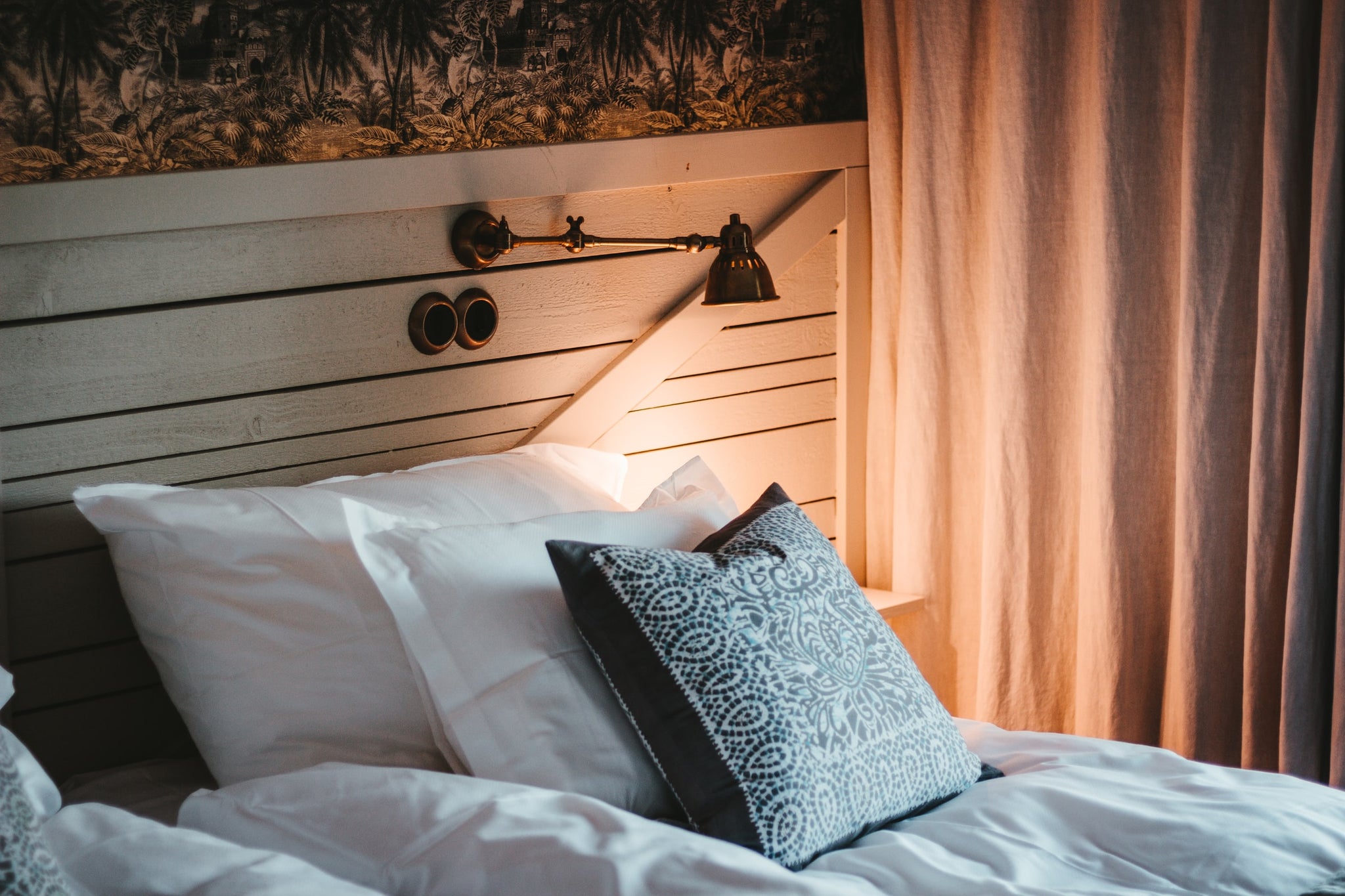
Bed frame
Metal bed frames can act as a conductor for electromagnetic frequencies, so we always recommend opting for a wooden design (made using natural, untreated and unvarnished wood).
Bed positioning
Ideally, leave at least 8 inches of space between your bed and the walls around it. This helps to create distance between any magnetic fields emitted by internal wiring (yes, it can even get through a wall) and your sleeping body. If your house or bedroom is located next to a utility pole, make sure your bed is positioned at least six feet away from it, to allow for the magnetic field it will be creating.
Flooring
Carpets and other synthetic flooring are usually laced with a noxious blend of fire retardants, stain repellents and waterproofers, and can contain harmful VOCs like acetaldehyde, benzene, xylene and methylene chloride. Such VOCs are known to cause unpleasant symptoms, like headaches, sinus problems and itchy eyes. Take carpets for example, which are usually a nylon or a wool and nylon blend, with added VOCs for durability and stain resistance. Switch instead to natural alternatives – like natural hardwood flooring – for a healthier night’s rest and an appealing aesthetic too.
Lighting
Electricity has only been a part of our lives for the past 100 years or so. Before this relatively recent introduction, we never experienced bright light after sunset, basking only in the warm glow of a fire.
Our 24-hour circadian rhythm (AKA our body clock), which ensures we feel awake and sleepy at the right time of day by releasing a host of hormones, can be knocked out of kilter when our eyes are exposed to artificial light. As well as mobile phones, radio clocks, digital readers and bedside lamps are all guilty of throwing our natural rhythms out of whack.
A Harvard study (8) found that late evening exposure to room lights caused melatonin levels to plummet; making it harder to fall asleep.
So, we recommend setting the mood for sleep by using a red-toned, infrared incandescent lightbulb in your bedside lamps instead - like this one by SaunaSpace. Whilst filtering out blue spectrum light, this uniquely designed ThermaLight Bulb delivers healing wavelengths - allowing your melatonin levels to remain stable.
Paint and wallpaper
Unfortunately, most paints, wallpapers and wallpaper glues are packed with toxic chemicals – which are easily released into the air and then inhaled. In fact, wallpaper and wallpaper glue are some of the worst-offending chemical DIY products on the market, with the heat from radiators making the issue even worse. Look out for 100% natural, sustainable substitutes – such as clay plasters – to create healthy, breathable – and stylish – finishes for your bedroom walls and ceilings.
If you’re concerned about EMFs, you could try applying an EMF shielding paint. You may find you need up to x3 coats for maximum protection against 5G radiation. Always ask a professional EMF consultant for help if you’re unsure.
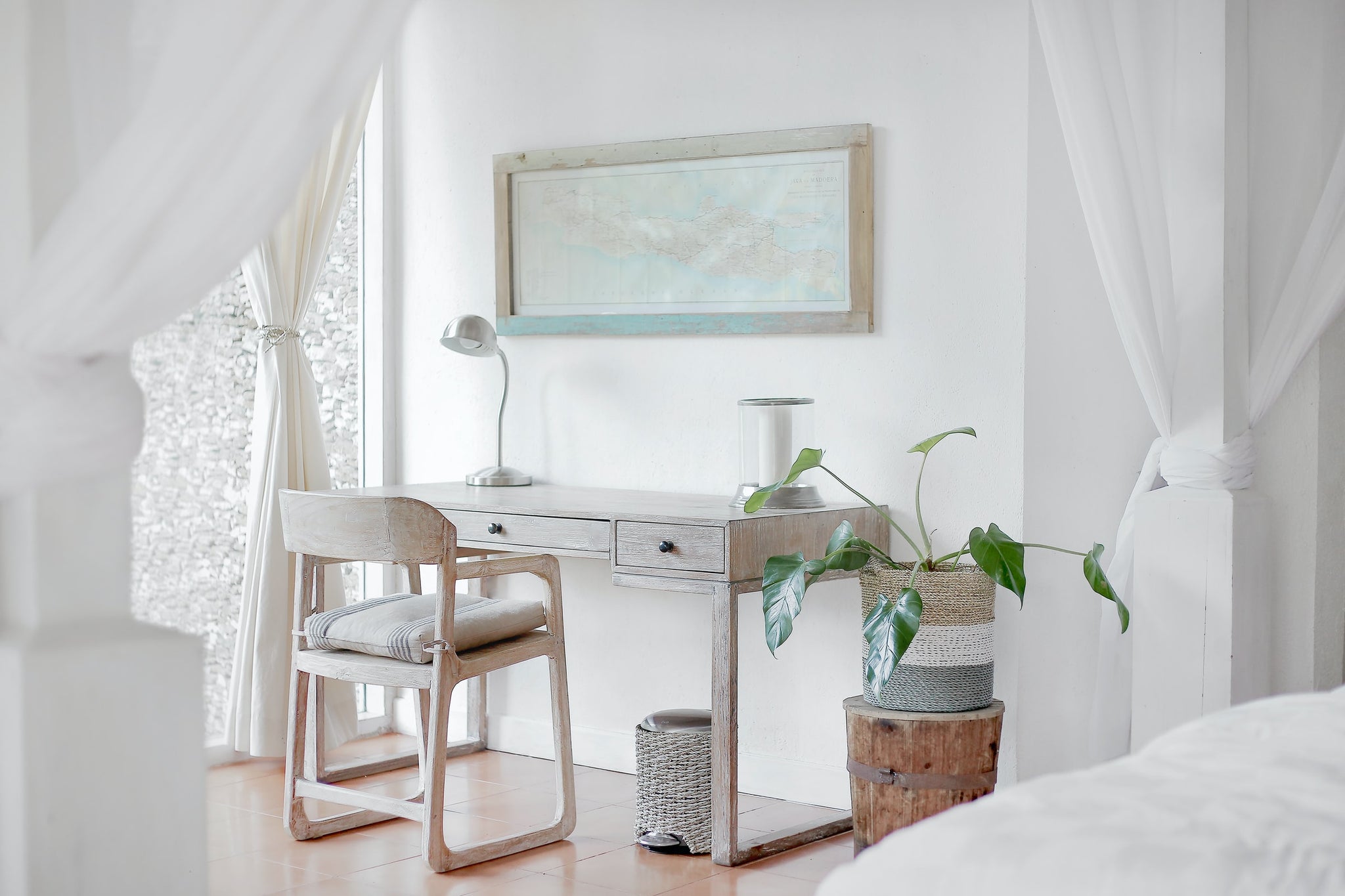
Air flow / temperature
According to research, (9) the temperature of our environment “is one of the most important factors that can affect human sleep”, as the core body temperature “decreases during the nocturnal sleep phase and increases during the wake phase”.
Holistic psychiatrist and sleep expert Ellen Vora, M.D., (10) explains that, thanks to evolutionary factors, we’re hard-wired to feel sleepy when the temperature falls: "in the outdoor conditions in which we evolved, the temperature drops at night.”
A hot, stuffy room can result in a restless sleep, whilst a room that’s too chilly can make it difficult to relax enough to drift off comfortably, with the optimal temperature for sleep believed to be around 18 degrees Celsius.
“If you’re living in a clean, unpolluted area, having the window open overnight whilst you sleep is a great idea”, says Tara. “Making sure you open your window for a while during the day, to let some fresh, cool air circulate, helps.”
Condensation from overnight respiration and perspiration can also lead to mouldy windows and damp walls – bringing with it a whole host of mould-related health risks. Proper ventilation is key here too, but you could also invest in an innovative probiotic air purifier to feed on mould, pollen and other irritating allergens.
UP NEXT: Now that you’ve got your bedroom perfectly prepped for better sleep, it’s time to turn your attention to the wind-down routine that will make drifting off each night an absolute dream.
References
(1) https://journals.plos.org/plosone/article?id=10.1371/journal.pone.0110825
(2) https://www.tandfonline.com/doi/abs/10.3109/15368378.2011.631068
(3) https://www.ncbi.nlm.nih.gov/pmc/articles/PMC3561068/
(4) https://www.independent.co.uk/life-style/health-and-families/health-news/mobile-phone-radiation-wrecks-your-sleep-771262.html
(5) https://science.sciencemag.org/content/366/6465/628
(6) https://www.ahajournals.org/doi/10.1161/JAHA.119.014587
(7) https://pubmed.ncbi.nlm.nih.gov/17178584/
(8) https://www.health.harvard.edu/staying-healthy/blue-light-has-a-dark-side
(9) https://www.ncbi.nlm.nih.gov/pmc/articles/PMC3427038/
(10) https://www.mindbodygreen.com/wc/dr-ellen-vora








